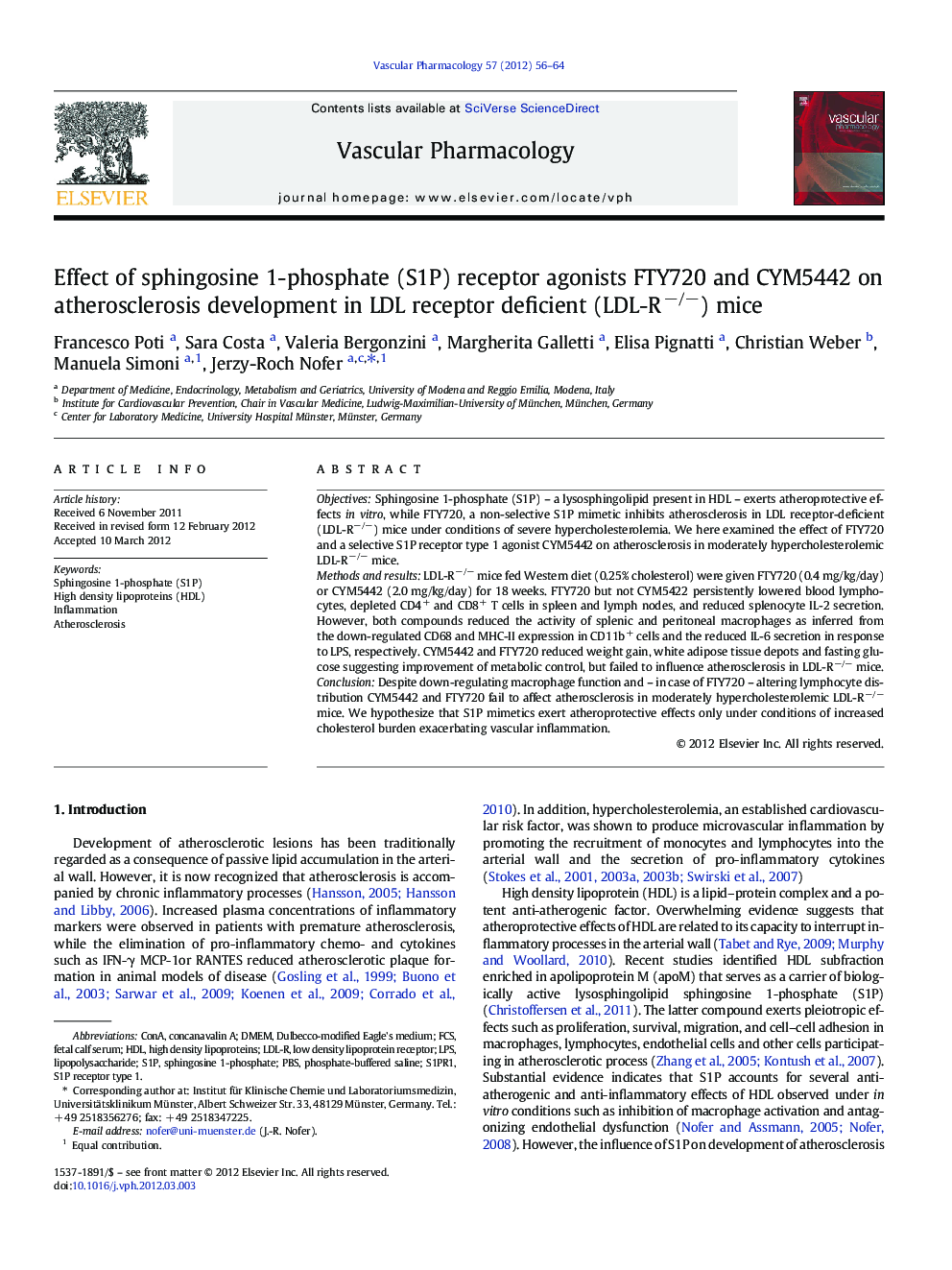| Article ID | Journal | Published Year | Pages | File Type |
|---|---|---|---|---|
| 2574357 | Vascular Pharmacology | 2012 | 9 Pages |
ObjectivesSphingosine 1-phosphate (S1P) – a lysosphingolipid present in HDL – exerts atheroprotective effects in vitro, while FTY720, a non-selective S1P mimetic inhibits atherosclerosis in LDL receptor-deficient (LDL-R−/−) mice under conditions of severe hypercholesterolemia. We here examined the effect of FTY720 and a selective S1P receptor type 1 agonist CYM5442 on atherosclerosis in moderately hypercholesterolemic LDL-R−/− mice.Methods and resultsLDL-R−/− mice fed Western diet (0.25% cholesterol) were given FTY720 (0.4 mg/kg/day) or CYM5442 (2.0 mg/kg/day) for 18 weeks. FTY720 but not CYM5422 persistently lowered blood lymphocytes, depleted CD4+ and CD8+ T cells in spleen and lymph nodes, and reduced splenocyte IL-2 secretion. However, both compounds reduced the activity of splenic and peritoneal macrophages as inferred from the down-regulated CD68 and MHC-II expression in CD11b+ cells and the reduced IL-6 secretion in response to LPS, respectively. CYM5442 and FTY720 reduced weight gain, white adipose tissue depots and fasting glucose suggesting improvement of metabolic control, but failed to influence atherosclerosis in LDL-R−/− mice.ConclusionDespite down-regulating macrophage function and – in case of FTY720 – altering lymphocyte distribution CYM5442 and FTY720 fail to affect atherosclerosis in moderately hypercholesterolemic LDL-R−/− mice. We hypothesize that S1P mimetics exert atheroprotective effects only under conditions of increased cholesterol burden exacerbating vascular inflammation.
Graphical abstractFigure optionsDownload full-size imageDownload high-quality image (185 K)Download as PowerPoint slide
